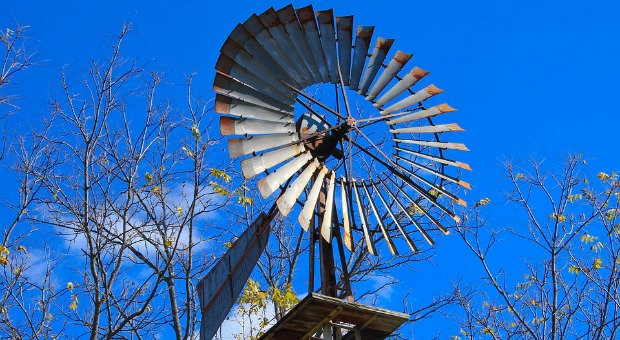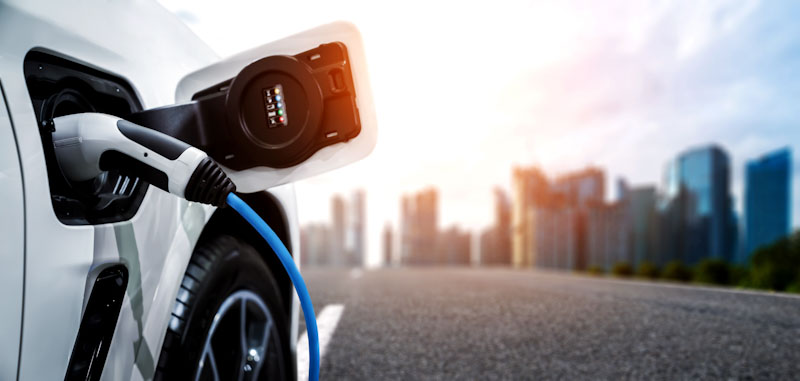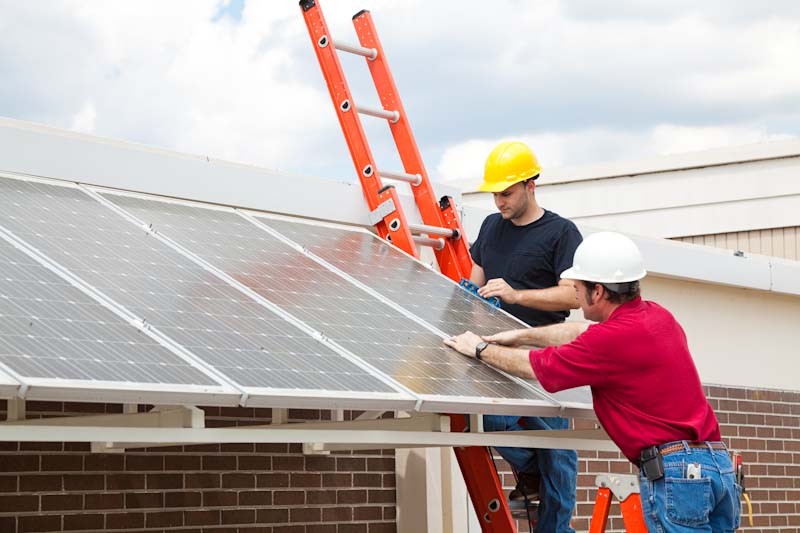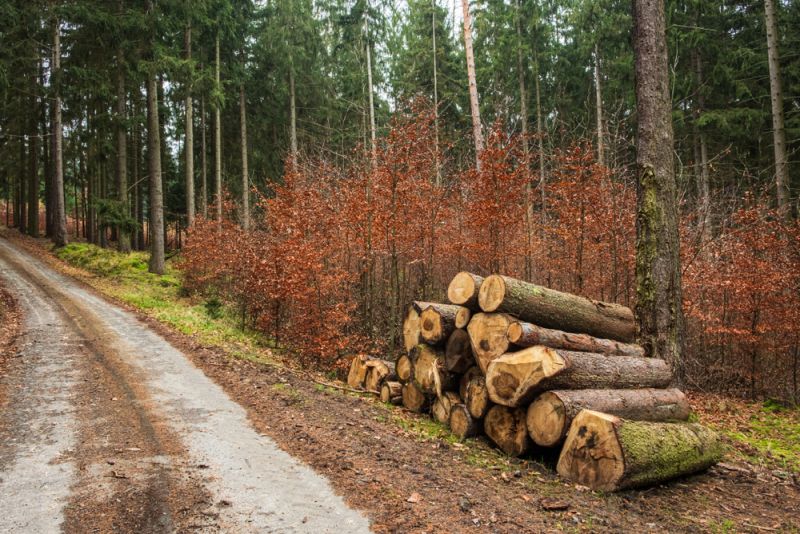Even though our society may be on the verge of collapse, the increased interest in wind power has resulted in some amazing new designs.
Rather than build a wind turbine using conventional blade patterns, you can take advantage of these designs and generate more electricity with less effort.
No matter whether you are going to remain in your current location, build a homestead, or bug out to a prepper community, each of these designs can be built by individuals and small groups.
Modify the Blade Shape to Reduce Drag
Many people choose wind power over solar because it is easier to build a functional wind turbine from junk materials. It is also easier to maintain wind turbines and replace parts as needed. As you may be aware, solar panels require rare earth metals, and have electronic circuitry that can wear and be ruined easily.
A number of studies also reveal that generating power from the wind is more efficient at both the consumer and commercial power generation levels.
On the other hand, if you use a conventional blade system, you may run into several problems that reduce efficiency and create a situation where you may not be able to generate enough electricity to meet your needs.
Just because the blades on a conventional turbine move when the wind blows, that does not mean they are working as efficiently as possible. Depending on the shape of the blade, one of three things can happen:
- If the blade is shaped just right for the wind speed and direction, there will be minimal drag on the blades, and no wind will get past without being converted into lift. As a general rule of thumb, thin, curved blades work better than wider ones.
- If the wind speed is too fast for the blade shape, too much drag will be created. The faster the blade spins, the more disruption in air current there will be around the blade. Essentially, a blade that may only be 2 feet across and 10 feet long will repel the wind as if the blade were 4 or 5 feet across and 15 – 20 feet longer.
By changing the curve of the blade to match faster wind speeds, the drag will be reduced so that more wind moves towards the blades.
- If the wind speed is too slow, wind that could be used to turn the blades will simply pass through instead of being used. Typically, blades that are curved for high speed winds will not work well in lower speed winds because there are no disrupted wind currents or a blade to capture the wind and harness it to lift the blades.
Some of these problems can be reduced by making changes to the blade shape. For example, the “Whale Power” blade design was developed after observing that Humpback Whales also have a problem with managing drag and stalling depending on the angle they move their fins at.
In order to get better lift at more severe fin angles, humpback whales have small, rounded nodules, or tubercles on their fins that help reduce drag while providing more surface area at the same time.
The “Whale Power” blade design basically has a wavy edge on the blade that does the same thing. Wind tunnel tests reveal that these blades can be used at wind speeds up to 40% lower than conventional blades.
Considering the number of polymers and other lightweight materials on the market these days, it is entirely possible for preppers to make their own wavy blade systems rather than wait for them to become available for sale to consumers.
Needless to say, if you already have a wind turbine and can gain access to the blades. Cutting a few waves into the edge might make it more efficient. In the video bellow you will find an interesting comparison between a humpback whale and a wind turbine.
Video first seen on WIRED.
Wind Lenses Redirect Wind Back to Conventional Blade Designs
Of all the innovations in wind turbines, the Wind Lens from Japan is one of my favorites. Basically, the lens uses 3 to 5 narrow blades with a circular band that goes all the way around the blades. The band, or “lens” is oriented so that wind escaping from the blades gets directed back to them. It is estimated that this simple innovation leads to 3 times the power output.
Here are some other advantages to building a Wind Lens:
- Smaller blade systems will produce power from lower wind speeds.
- Conventional wind turbines can be very noisy. If you live near one, the noise can make you feel very sick. The Wind Lens produces much less sound, and therefore can be installed in cities or other areas where you may not be able to put up a conventional wind turbine.
- Unlike conventional wind turbines, it is very easy to keep birds from flying into the blades. Just put a net or cage around the lens and the birds will not be able to reach it. Even if you are only building a small wind turbine for personal use on a homestead, protecting birds that are part of the food chain you rely on will be very important.
- Since the wind lens is more efficient than conventional systems, you may be able to mount them on a smaller tower, or even a rooftop. While the wind lens may not work as well as some other systems at ground level, you can still utilize smaller lenses to capture weaker air flow at lower levels.
This is especially important to consider if you cannot climb extensively, or have concerns about maintaining wind turbines mounted on taller towers.
If you have a wind turbine in operation right now, or plan on building one, you may want to see about putting a lens around it to see if you also notice an improvement in efficiency. Here is an example.
Video first seen on metal01234567890.
Capture Wind From All Directions
Another problem with conventional wind turbines is that they only work at optimal levels when the wind hits them from a specific direction. If the wind turbine is caught in a downdraft, or the wind comes in gusts, the blades may turn slower, or not at all.
The QR5, or Quiet Revolution 5, makes use of helical blades that are mounted on a vertical axis. No matter what direction the wind is coming form, these ultra curved blades will capture it and cause the turbine to spin.
Even though the helical wind turbines have been around for some time, they are mostly still used for generating commercial electricity in the UK.
You can still study the basic shape and see about building the basic blade shape for home use. As with many new designs, you will probably find that polymers or light metals will be the most useful.
Video first seen on Rubén Gutiérrez.
2 Vertical Turbine Designs
When you feel a breeze or wind moving through, you may be led to think that horizontal wind capture systems will work best. Unfortunately, the vast majority of horizontal systems present an “obstacle” to the wind instead of working with it to produce the greatest amount of power.
Even though vertical wind turbines still have some drag, they are far more efficient at capturing the wind and also making the most use of it. Here are 2 designs that you may want to consider for your power generating needs:
Windspire – unlike several other wind turbines discussed in this article, the Windspire is available for home use in the United States. It is an industry leader that is capturing attention because of it’s small size and capacity to generate electricity with wind speeds as low as 12 mph.
Aside from that, the Windspire is so quiet, it can be installed just about anywhere. No matter whether you live in a city, town, or miles away from other people, this wind turbine is quiet enough to put right next to buildings without causing health problems associated with excess sound.
The Windspire is basically a cylinder shaped turbine with two vertical rails connected to a central axis. Aerofoils connect from the axis to the two vertical rails, plus two circles at the top and bottom. If you purchase one directly from the manufacturer, it will be made of metal alloys and special coated surfaces.
Surprisingly, these turbines are must sturdier than they look. They can withstand wind speeds up to 105 miles per hour. Since they have already been installed in many different climates across the nation and around the world, it is also safe to say they can easily tolerate a wide range of temperature and moisture conditions.
If you are going to spend money on a pre-manufactured turbine, or get financing for one, you will find that the Windspire is efficient enough and tested enough to be worth the extra expense.
Video first seen on www.windspireenergy.com.
WePower – This wind turbine looks a little like the Windspire in the sense that the system is mounted on a vertical axis. The main difference is that instead of narrow vertical bars and aerofoils extending from the axis, WePower has curved blades mounted between two disks. It is well suited to city and town settings, and can also be used in less populated settings.
WePower is quieter than many other wind turbines on the market, and it is also safe for birds and other flying creatures. As an added bonus, if you purchase a unit from the manufacturer, it comes set up with everything you need to connect it to the commercial energy grid.
If you are interested in making money on wind power by producing your own electricity, this system may be one of the best on the market for your needs.
Even though WePower is also growing in popularity with off gridders, do not forget that it is only guaranteed to last for 20 years (according to the manufacturer). If you are interested in long term disaster prepping, this system may work for some time, but you may have to replace it sooner than later.
That being said, if you take the time to learn how it works, then you may also find ways to make your own models or repair existing equipment.
Video first seen on WePOWER.
Tesla Turbines
When I made my first Tesla Turbine, I found that it worked best with running water. With improvements in materials and inlet design, the Tesla Turbine also works very well with air. Here are a few advantages to using a Tesla Turbine as a wind turbine:
- Virtually indestructible – unlike other turbines, the Tesla Turbine has very little internal friction that would wear out bearings and other parts.
- You can build Tesla Turbines of all sizes from many different materials.
- You will not need a motor for generating electricity. Just add some magnets to one disk and then put a coil of wire nearby. Aside from being cheaper, you will never need to worry about replacing a motor.
- Depending on how you build the air inlet, the Tesla Turbine can be used in both high and low speed winds. Just remember that the inlet system will look something like a funnel in the sense that it will be larger in the capture area, and then get to a smaller size near the turbine in order to concentrate the wind as much as possible.
- Of all the wind turbines listed in this article, the Tesla Turbine is one of two that can be used in an indoor setting. These turbines are very quiet and do not require poles for mounting. You can run them from drafts coming in from a window, or mount them on the roof much as you would an antenna. Because of their small size, capacity to be used at near ground level, and lack of noise, it should be possible to use them in cities as well as other areas where conventional wind turbines are not allowed.
Since the moving parts of the Tesla Turbine are housed in a casing, you will also never have to worry about birds or other animals getting sucked into the blades. Just be sure to put a screen over the wind collector so that animals don’t get sucked into it.
- As you may recall, Tesla Turbines also release “exhaust” in the form of whatever propelled them (air or water) exiting the center region. You can easily build a tube to catch this exhaust and then feed it right back into the turbine intake for greater efficiency.
- In most cases, people working with Tesla Turbines have too much spinning to deal with as opposed to too little!
Oscillating Membranes
It is fair to say that if you are going to generate enough electricity for a homestead, or even a conventional household, it will take some time and money to build or purchase large enough devices. Even if you decide to build Tesla Turbine units, it can take some time to get all the modules built.
That all being said, if you are in an emergency situation and need to scavenge in order to generate small amounts of power, a device that uses oscillating membranes, or Wind Belt may be of use.
Basically, the Wind Belt makes use of a thin strip of material mounted in such a way that the material will vibrate if a breeze passes it. As the material vibrates or “oscillates”, it pushes magnets up and down located on each side of the belt. These magnets pass through coils of magnets as they move, which generates electricity.
Systems like this are being used in third world countries to provide lighting and other basic needs in rural areas where other systems are not available. The Wind Belt will power LED lights, and can also be used to charge small batteries. They cost as little as $5.00 to build and will work with wind speeds as low as 10 mph.
You can build your own Wind Belt to see how they work, and then store away the materials to make more devices as needed.
If you have little more than a magnet, a few coils of wire, and an old VCR tape, you can make a Wind Belt. Thus, they are ideal for both short term and long term crisis situations for powering low drain devices. Since they can run on breezes from a window, and will not harm birds or other animals, they can be used just about anywhere. Unfortunately, larger sized devices may be a bit noisy.
You can easily build a Wind Belt, and also innovate on the design to produce more electricity. For example, you can try using a frame that will accommodate multiple strips, or membranes. From there, simply connect more magnets and coils, then combine their power.
You can also experiment with different membrane lengths to come up with more optimal sizes. Something that would be about the size of a small car radiator may just give you enough power to run small camping equipment gear.
Video first seen on Vic Aguilar aka UpBeatnik.
Nautilus Shell Wind Turbines
There is no such thing as a device that generates absolutely no noise while it is running. Unfortunately, advancements in wind power have often been halted because conventional wind turbines make so much noise.
Even though there have been many innovations that reduce sound to a level where wind turbines can be used in cities and towns, few match the quietness of nautilus style shell turbines. These designs are also far more efficient than conventional turbines and easily match or exceed other designs listed in this article.
Nautilus style wind turbines were invented in Holland by a company called The Archimedes. As you may be aware, the common Nautilus shell creates a perfect spiral that is found in just about every part of nature.
When it comes to capturing wind power, this design has very little drag and will spin in even slight breezes. Regardless of where the wind is coming from, it moves easily along the curved blades and causes them to spin. The shell system can also be mounted in such a way that it will turn and bend in order to capture wind from every direction with ease.
Unlike other systems, this design does not require motors or computers to find the optimal direction. It moves much like a wind vane and easily finds the optimal direction for generating power.
Video first seen on Windvoordeel.
Vortex Bladeless Wind Turbine
If you understand how a Dyson Vacuum Cleaner with a wind tunnel works, then you have the basics of how the Vortex Bladeless Wind Turbine works. Basically, this is a vertical wind turbine that captures wind that moves along a spiral path, or vortex until it reaches the bottom.
No matter what direction the wind comes in from, it is optimized by the spiral so that it is just right for spinning the motor at the bottom. Since the vortex column also tilts with the wind, the shaking motion helps optimize the wind power.
Even though this wind turbine works well as designed, you might want to try using it to drive a Tesla Turbine instead. This will give you all the advantages of concentrating and optimizing the wind flow and also the benefits of not needing a motor to generate electricity.
You may also want to use the vortex wind turbine with oscillating membranes or other devices that can replace the motor assembly.
Video first seen on Vortex Bladeless.
Nano or Tiny Wind Turbine
Consider that tiny drops of rain in enough quantity can create a flood, while snowflakes can create blizzard and piles of snow that reach several feet in height. No matter how small some things may be, they can amount to huge things if assembled correctly. Nano Wind Turbines take that basic idea and apply it to capturing wind.
Basically the “Nano Vent Skin” is a fabric made up of tiny turbines that look similar to the QR 5. As these tiny turbines spin, they generate small amounts of electricity that can be pooled together to run all kinds of devices.
Perhaps best of all, a breeze from cars passing by, or just about anything else will set these tiny turbines in motion. The fabric can be mounted on window shades, building walls, or even to your own clothes. If you are interested in wind turbines that operate primarily at ground level, this design or modifications of it may be the ones you will be best served by focusing on.
As innovative as this design is, you will not find it available for sale to consumers. In addition, nano technologies are still very much in their infancy. That being said, if you study the orientation of the wind turbines and their axis carefully, you may be able to build a grid of 1” turbines that will generate electricity with ease.
Instead of using a QR5 helical design, you may also want to try the Nautilus shell design to see if it improves efficiency.
Video first seen on aotegui.
A Note About Power Storage
It should be noted that no power generation system is truly complete unless you can store the power and produce an even flow of current. While these topics are beyond the scope of this article, do not forget to keep up to date on innovations such as the cotton battery and other systems that may work better and last longer than rechargeable batteries currently on the market.
If you can find a battery system that you can build for yourself from scavenged parts, or with a minimal amount of effort, you should also know how to integrate those batteries into a more conventional system.
If you have been thinking for using wind power for emergency and long term survival needs, you may also be spending most of your time learning how to optimize, build, and maintain conventional wind turbine systems.
As you can see, focusing on these old, outdated systems will more than likely require building systems that are at least twice the size, break down easier, and will not last as long as some of the newer innovations emerging in this field.
Take some time now to look at some of the vertical, helical, and shell designs to see which ones will best suit your needs. At the very least, you can try building small models to see if they offer an advantage to something you may have been planning to build or buy.
In an upcoming EMP disaster, knowledge is power. Click the banner bellow to find out more about how to build your own survival sources of electricity and much more!
This article has been written by Carmela Tyrell for Survivopedia.
Resources
http://www.alternative-energy-tutorials.com/energy-articles/wind-turbine-blade-design.html
https://www.youtube.com/watch?v=vQexzNg_e9A
http://www.windspireenergy.com/
http://sierrasolarsystems.com/WePower.html
https://www.freeonplate.com/how-to-build-cheap-windbelt-generator-using-vhs-tape/
http://www.iflscience.com/technology/new-bladeless-wind-turbine-looks-asparagus/










grintch | October 12, 2016
|
See this too:
http://www.deutsches-museum.de/en/information/young-people/inventors-trail/drivetrains/flettner-rotor/
Pingback:Off-grid Survival: How To Generate Energy In The Desert | Survivopedia | June 1, 2017
|